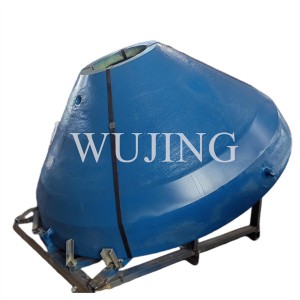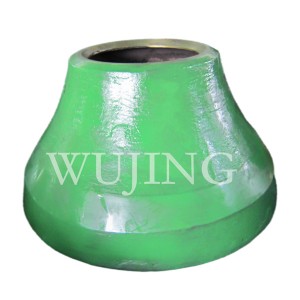The outer cover of the equipment is not only a protective shell but also an important link to maintain the “healthy operation” of the equipment. Many industrial equipment, motors or precision instruments will continuously generate heat during operation. If the outer cover has poor ventilation and heat dissipation, heat will accumulate inside, causing the equipment to run more slowly, increase malfunctions, and even shorten its service life. Good ventilation and heat dissipation design can ensure that the equipment always operates at an appropriate temperature, significantly enhancing both efficiency and reliability. This article discusses the common methods of ventilation and heat dissipation for outer covers, as well as how to choose the appropriate design based on the requirements of the equipment.
Why is ventilation and heat dissipation so important for equipment?
The heat generated during the operation of the equipment mainly comes from the internal motor, circuits or friction components. For instance, when the motor of a crusher rotates at high speed, the coil will generate a large amount of heat. When the circuit board of a precision instrument is in operation, the chip will also continuously generate heat. If the outer cover is airtight, these heat cannot escape, and the internal temperature may rise from normal to over 60℃, or even higher.
The impact of high temperatures on equipment is very direct: overheating of the motor will cause the insulation layer to age, the rotational speed to decrease, and the power consumption to increase. Circuit components are prone to poor contact and even burnout at high temperatures. Some plastic or rubber components may also deform due to high temperatures, affecting the sealing performance or transmission effect of the equipment. The ventilation and heat dissipation design can promptly expel heat, keeping the internal temperature of the equipment below 40℃ (the optimal operating temperature for most devices), just like installing a “breathing system” for the equipment, ensuring smooth operation.
For equipment that needs to operate for a long time (such as production line motors and large pumps), ventilation and heat dissipation design is even more indispensable. If the machine is frequently shut down for maintenance due to heat dissipation issues, it will not only affect production efficiency but also increase maintenance costs. Sometimes, a small ventilation opening design can reduce equipment failures by half.
Common ventilation methods: Making the air “move”
The core of ventilation is to allow the air inside and outside the outer cover to circulate, exchanging the hot air inside and drawing in the cold air from the outside. According to the heat generation of the equipment and the installation environment, there are three common ventilation methods, each suitable for different scenarios.
Natural ventilation is the most fundamental and economical method. It doesn’t require additional power and relies entirely on the natural flow of air (hot air gently rises and cold air heavily sinks) to achieve ventilation. When designing, an air inlet will be set at the bottom of the outer cover, and an air outlet will be set at the top or side to form an air flow channel of “bottom in and top out”. For instance, for the outer cover of a small motor, leaving a circle of grid-shaped air intakes at the bottom and opening several circular exhaust holes at the top can meet the basic heat dissipation requirements. This method is suitable for equipment with low heat generation and installed in open Spaces. Its advantages are simple structure and no maintenance required. However, its disadvantage is that the ventilation efficiency is greatly affected by the environment (for example, the effect will decline in hot and muggy weather).
Forced ventilation is suitable for equipment with high heat generation. When natural ventilation is insufficient for heat dissipation, fans or blowers will be installed at the ventilation openings to actively extract hot air or blow cold air in. For instance, the outer cover of an industrial oven is equipped with a fan on the side that draws air outward, which can quickly expel the hot air inside to the outside. Some precision instrument covers are equipped with inward-blowing fans at the bottom, allowing cold air to directly blow towards the heat-generating components. The efficiency of forced ventilation is 3 to 5 times that of natural ventilation, but it requires electricity and is suitable for equipment installed in enclosed Spaces such as machine rooms and corners of workshops.
Mixed ventilation is a combination of “natural + forced”, taking into account both efficiency and energy conservation. For instance, on the outer covers of large equipment, natural ventilation is usually relied upon for heat dissipation. However, when the sensor detects that the internal temperature exceeds 35℃, the fan is automatically activated to enhance air exchange. This method is suitable for equipment with unstable heat generation (such as crushers that start and stop intermittently and pumps that operate intermittently). It can ensure heat dissipation at high temperatures and save energy consumption at low temperatures, making it a relatively intelligent choice.

Practical heat dissipation method: “Conduct away” the heat
Ventilation solves the problem of air circulation, while heat dissipation enables heat to be transferred from the surface of the equipment to the air more quickly. In addition to relying on air flow to remove heat, there are several specialized heat dissipation methods suitable for different types of devices.
Air cooling is the most commonly used method and works best when used in combination with ventilation. It accelerates heat dissipation by increasing the contact area between the device and the air, such as adding a pleated metal sheet (heat sink) on the outer surface of the device, or attaching a layer of aluminum plate with good thermal conductivity on the inner side of the outer cover. Heat will be transferred from the device to the heat sink and then carried away by the flowing air, just like giving the device “heat dissipation wings”. This design is commonly used for the outer cover of small circuit boards. The inner side of the shell is fully covered with fine aluminum heat sinks, which, in combination with ventilation ports, can quickly lower the temperature of the chips.
Water-cooled heat dissipation is suitable for equipment with extremely high heat generation, such as large generators and high-frequency motors. It works by installing water pipes inside the device or in the interlayer of the outer cover, allowing cold water to circulate and absorb heat, which is then dissipated through an external radiator. The heat dissipation efficiency of this method is more than ten times that of air cooling, but it has a complex structure and requires a dedicated water circulation system. It is generally used for industrial-grade heavy equipment. For instance, the motor covers of steel mills are all equipped with water-cooling devices; otherwise, they simply cannot operate in high-temperature environments.
Oil cooling is suitable for precision equipment that is afraid of water and dust. It wraps the heat-generating components with heat transfer oil (a special type of high-temperature resistant oil). After absorbing heat, the oil flows through pipes to the heat dissipation box outside the outer cover, cools down and then flows back for recycling. For instance, the outer covers of some hydraulic equipment are filled with heat transfer oil inside, which can not only dissipate heat but also lubricate the components, achieving two goals at once. However, oil cooling requires regular replacement of the heat transfer oil, which has a slightly higher maintenance cost and is suitable for scenarios with strict environmental requirements.
Details to note during design: Make heat dissipation more efficient
Ventilation and heat dissipation design is not simply about making a few holes and installing a few fans. If the details are not handled well, it is very likely to be a thankless effort. These practical details can double the design effect.
The position of the ventilation opening should avoid “dead corners”. The air intake should face the heat-generating parts of the equipment, such as the outer cover of the motor. It is best for the air intake to directly face the motor’s cooling fan, allowing the cold air to blow directly towards the heat source. The exhaust port should be located at the area with the most concentrated heat (usually the top or the upper side) to ensure that the hot air can be discharged smoothly. If there are partitions inside the outer cover, holes should be drilled in the partitions to avoid creating a closed space that could lead to heat accumulation.
Dust prevention and water resistance cannot be ignored. Ventilation openings are prone to dust and rainwater entering, especially the outer covers of outdoor equipment. Dust-proof nets should be installed at the air inlets (regularly cleaned), and the exhaust openings should be made into inclined louvers (with the Angle downward to prevent rainwater from entering). In workshops with a lot of dust (such as cement plants and flour mills), a filter cotton can be added to the fan to prevent dust from blocking the ventilation holes and affecting heat dissipation.
The heat dissipation components should be “closely attached” to the equipment. Whether it is a heat sink or a water-cooled pipe, they should be in close contact with the heat-generating surface of the equipment. A layer of thermal grease (like toothpaste) can be applied in the middle to reduce the air in the gaps (air has poor thermal conductivity), making heat transfer faster. If it is the overall heat dissipation of the outer cover, the material of the outer cover is best to choose metal with good thermal conductivity (such as aluminum alloy, steel plate), which has a much better heat dissipation effect than plastic outer covers.

How to choose the appropriate ventilation and heat dissipation method?
Only by choosing the right approach can we ensure the effect without wasting costs. It can be judged by the heat output of the equipment:
For low-power devices (such as small motors and household instruments), which generate little heat, natural ventilation combined with air cooling (installing heat sinks) is sufficient.
For medium-power equipment (such as motors on workshop production lines and medium-sized pumps), forced ventilation (equipped with fans) combined with metal covers for heat dissipation can basically meet the requirements.
High-power or continuously operating equipment (such as large generators and industrial ovens) requires a combination of ventilation and water cooling/oil cooling to ensure stable operation at high temperatures for long periods of time.
The installation environment should also be taken into consideration: For outdoor equipment, attention should be paid to waterproofing and sun protection, and the ventilation outlets should be well protected. For equipment in enclosed Spaces, forced ventilation should be given priority to avoid the accumulation of hot air. In dusty environments, enhanced filtration should be carried out to prevent clogging.
The ventilation and heat dissipation design of the outer cover is essentially to “cool down and reduce the burden on the equipment”. Good design can enable equipment to operate efficiently at the optimal temperature, reduce malfunctions and extend its lifespan. What seem like simple vents and fans are actually the “invisible guarantees” for the stable operation of the equipment. Whether it is designing the outer cover of new equipment or renovating the heat dissipation system of old equipment, starting from the details of ventilation and heat dissipation, practical and economical solutions can always be found.
Post time: Jul-30-2025
